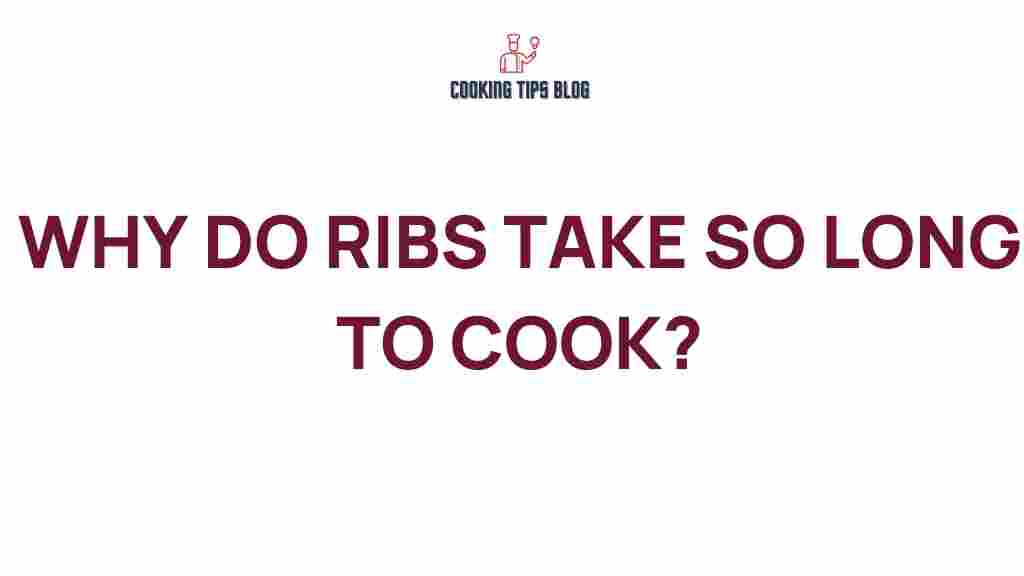The Science Behind Slow-Cooked Ribs: Why Patience Pays Off
When it comes to preparing one of the most beloved barbecue dishes, ribs stand out as a favorite for many. The rich, succulent flavor of ribs, paired with a tender texture, is a result of the meticulous cooking process that demands time and attention. In this article, we’ll delve into the science behind slow-cooked ribs and explore why patience truly pays off in achieving that melt-in-your-mouth experience. Whether you’re a seasoned pitmaster or a home cook looking to impress, understanding the intricacies of cooking ribs can elevate your culinary game.
Understanding Ribs: Types and Cuts
Before diving into the cooking process, it’s essential to know the different types of ribs available. Each type offers a unique flavor and texture that can influence your cooking method:
- Baby Back Ribs: These are smaller, leaner, and more tender than spare ribs. They are cut from the top of the rib cage and are often favored for their sweetness.
- Spare Ribs: Larger and meatier, spare ribs come from the belly side of the rib cage. They have more fat and connective tissue, which makes them ideal for slow-cooking.
- St. Louis Style Ribs: A trimmed version of spare ribs, these are cut into a more rectangular shape, making them easier to cook and serve.
- Country-Style Ribs: Not technically ribs, these are cut from the shoulder area and contain more meat, making them great for grilling.
Knowing the type of ribs you’re working with is crucial for determining the best cooking method and time required for that perfect finish.
The Science of Slow Cooking Ribs
The magic of slow-cooked ribs lies in the combination of low temperatures and extended cooking times, which work together to break down tough connective tissues and infuse flavor. Here’s how the science unfolds:
- Collagen Breakdown: Ribs contain collagen, a tough protein that gives meat its structure. When cooked slowly at low temperatures (around 225°F to 250°F), collagen transforms into gelatin, resulting in tender, juicy ribs.
- Flavor Development: Slow cooking allows spices and marinades to penetrate the meat deeply, enhancing the flavor profile. The Maillard reaction, which occurs at higher temperatures, creates a delicious caramelization on the surface of the meat.
- Moisture Retention: Cooking ribs slowly helps retain moisture within the meat. Covering the ribs during cooking can help trap steam, further preventing dryness.
Step-by-Step Process for Perfect Slow-Cooked Ribs
Now that you understand the science, let’s walk through the step-by-step process to achieve perfect slow-cooked ribs.
Ingredients
- 1 rack of ribs (your choice of type)
- Your favorite dry rub
- Barbecue sauce (optional)
- Apple cider vinegar or beer (for moisture)
Preparation
- Remove the Membrane: Start by peeling off the silver skin from the back of the ribs. This tough membrane can prevent flavor penetration and result in a chewy texture.
- Apply the Dry Rub: Generously coat the ribs with your chosen dry rub. The spices will create a flavorful crust as the ribs cook.
- Let Them Rest: Allow the seasoned ribs to rest for at least 30 minutes at room temperature. This helps the rub adhere better and enhances flavor.
Cooking Method
You can choose to slow-cook ribs using various methods, including:
- Oven: Preheat your oven to 225°F (107°C). Place the ribs on a baking sheet lined with aluminum foil, adding a splash of apple cider vinegar or beer for moisture. Cover tightly with foil and bake for 3-4 hours.
- Slow Cooker: If you prefer, you can use a slow cooker. Place the ribs inside, add a little liquid (such as broth or beer), and cook on low for 6-8 hours.
- Smoker: For true barbecue enthusiasts, smoking ribs is the ultimate method. Maintain a temperature of around 225°F (107°C) and smoke the ribs for about 5-6 hours, wrapping them in foil halfway through.
Finishing Touches
- Glaze with Barbecue Sauce: If desired, brush your favorite barbecue sauce on the ribs during the last 30 minutes of cooking. This caramelizes the sauce and adds a delicious layer of flavor.
- Rest Before Serving: Once cooked, let the ribs rest for at least 10-15 minutes before slicing. This allows the juices to redistribute throughout the meat.
Troubleshooting Common Ribs Issues
Even the most experienced cooks can encounter issues when preparing ribs. Here are some common problems and how to solve them:
- Ribs are Tough: If your ribs are tough, they likely weren’t cooked long enough. Slow cooking breaks down collagen, so give them more time to tenderize.
- Ribs are Dry: Dry ribs can result from cooking at too high a temperature or not covering the ribs during cooking. Consider adding moisture and cooking at a lower temperature.
- Flavor is Lacking: If your ribs lack flavor, try marinating them longer or using a more robust dry rub. Don’t forget to let the ribs rest after applying the rub for better flavor absorption.
Conclusion: Embrace the Art of Patience with Ribs
In the world of barbecue, the journey to the perfect ribs is a blend of science and art. Understanding the breakdown of collagen, the importance of moisture, and the way flavors develop can significantly enhance your cooking experience. By following the slow-cooking methods outlined above and embracing the patience required for this culinary endeavor, you can create ribs that not only satisfy your taste buds but also impress your family and friends.
So, the next time you’re ready to cook ribs, remember: good things come to those who wait. For more tips on mastering the art of slow cooking, check out this helpful guide.
If you’re looking to explore more about different cooking techniques and recipes, feel free to check our website for a plethora of delicious ideas!
This article is in the category Recipes and created by Cookingtipsblog Team
